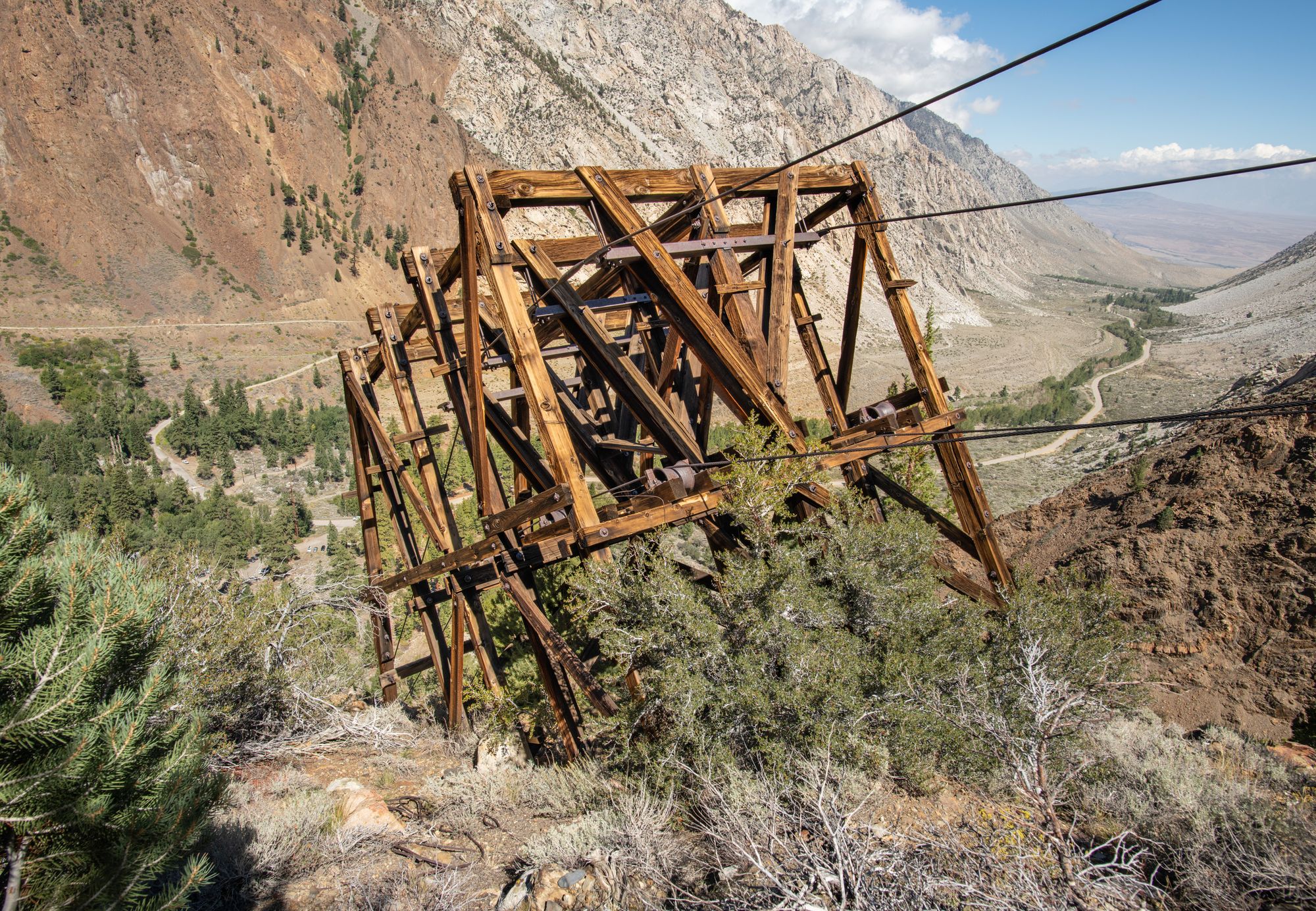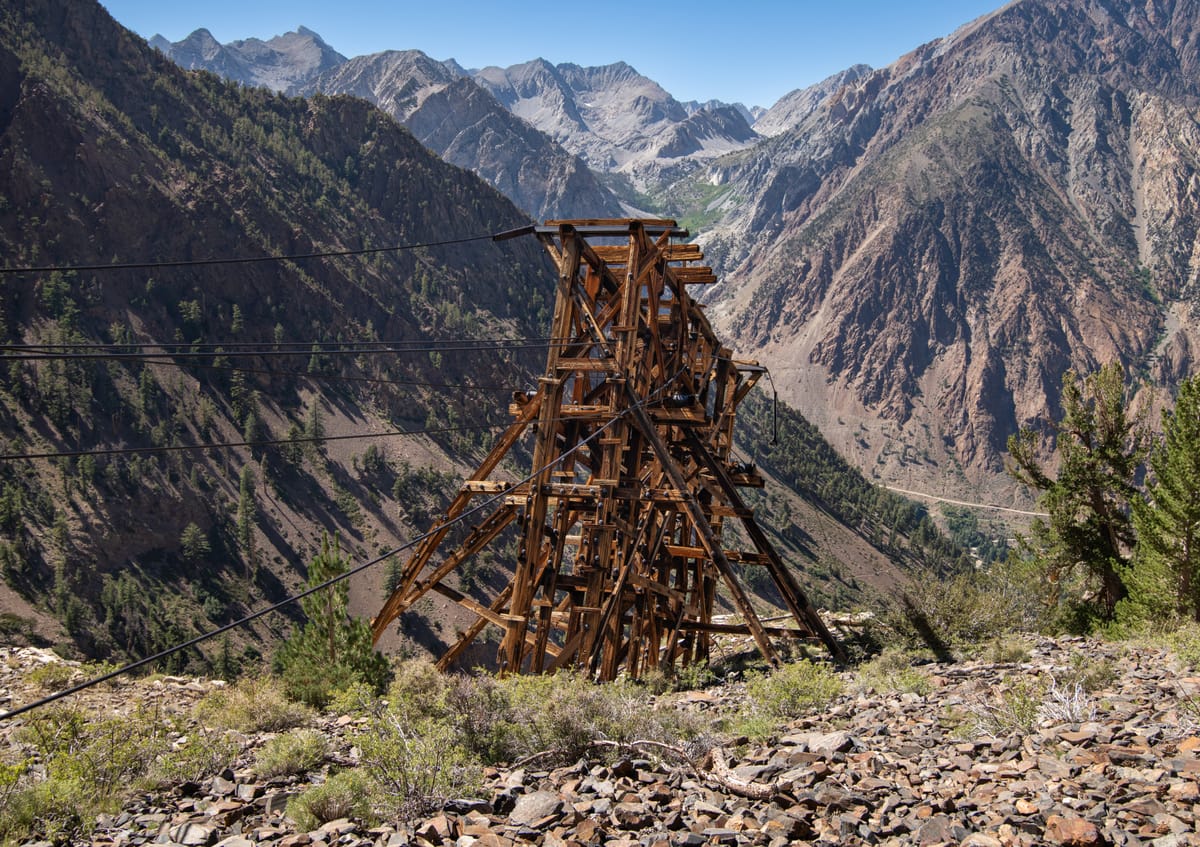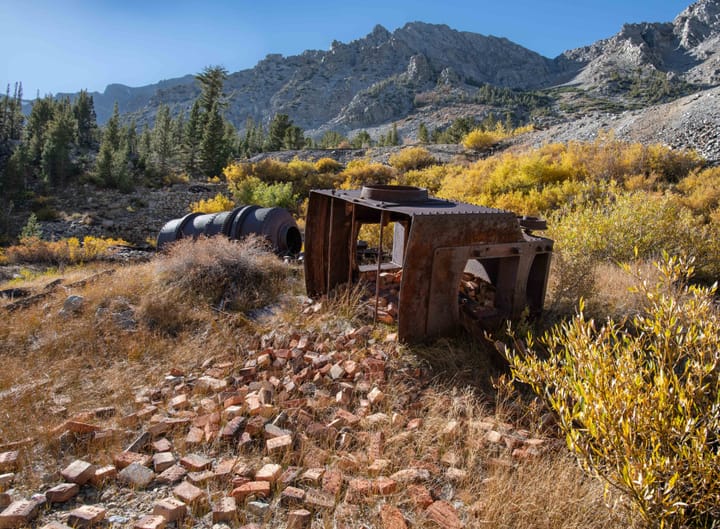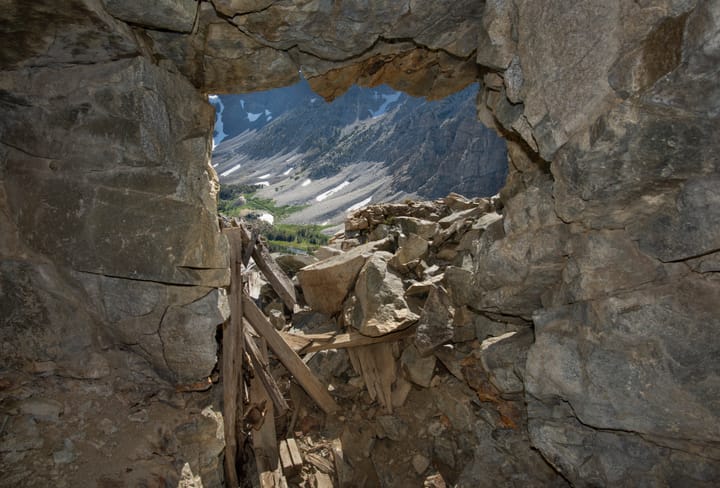This very adventurous hike follows an old mining trail which led to the Tungstar Mine, a 1940s tungsten mine high on the western slope of Mt. Tom, the prominent 13,658-foot peak just west of Bishop. The trail was used in the early days of the mine to build a tram between the mine and the Tungstar Mill, situated on the floor of Pine Creek Canyon next to today's Pine Creek Pack Station. The trail, now designated the "Gable Lakes Trail" in the Inyo National Forest, forks about one mile from the trailhead. The maintained Gable Lakes Trail continues on to Gable Lakes and the Lakeview Mine. Several of the lower tram towers can be easily seen close to the trail along the first mile.
At the fork, the unmaintained mine/tram trail crosses Gable Creek, then winds its way up to the Tungstar Mine at 12,000 feet. Hiking this part of the trail involves a difficult creek crossing, as well as navigating very steep and rugged terrain along a spotty trail that has seen little use since the 1940s.




